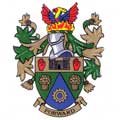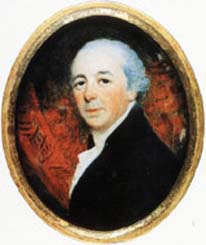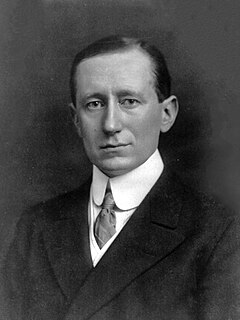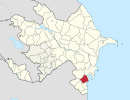
Mehrgarh, sometimes anglicized as Mehergarh or Mehrgar, is a Neolithic site located near the Bolan Pass on the Kacchi Plain of Balochistan, Pakistan, to the west of the Indus River valley.

The Indus Valley Civilisation (IVC) was a Bronze Age civilisation in the northwestern regions of the Indian subcontinent, lasting from 3300 BCE to 1300 BCE, and in mature form from 2600 BCE to 1900 BCE. Along with ancient Egypt and Mesopotamia it was one of three early civilisations of the region comprising North Africa, West Asia and South Asia, and of the three, the most widespread, its sites spanning an area stretching from northeast Afghanistan, through much of Pakistan, and into western- and northwestern India. It flourished in the basins of the Indus River, which flows through the length of Pakistan, and along a system of perennial, mostly monsoon-fed, rivers that once coursed in the vicinity of the seasonal Ghaggar-Hakra river in northwest India and eastern Pakistan.

Cookstown is a town and townland in County Tyrone, Northern Ireland. It is the fourth largest town in the county and had a population of 22,838 in the 2011 census. It is one of the main towns in the area of Mid-Ulster. It was founded around 1620 when the townlands in the area were leased by an English ecclesiastical lawyer, Dr. Alan Cooke, from the Archbishop of Armagh, who had been granted the lands after the Flight of the Earls during the Plantation of Ulster. It was one of the main centres of the linen industry West of the River Bann, and until 1956, the processes of flax spinning, weaving, bleaching and beetling were carried out in the town.

John Nash was one of the foremost British architects of the Regency and Georgian eras, during which he was responsible for the design, in the neoclassical and picturesque styles, of many important areas of London. His designs were financed by the Prince Regent, and by the era's most successful property developer, James Burton, with whose son Decimus Burton he collaborated extensively. Nash's best-known solo designs are the Royal Pavilion, Brighton, Marble Arch, and Buckingham Palace; his best known collaboration with James Burton is Regent Street; and his best-known collaborations with Decimus Burton are Regent's Park and its terraces and Carlton House Terrace. The majority of his buildings, including those to the design of which the Burtons did not contribute, were built by the company of James Burton.

It is generally recognised that the first radio transmission was made from a temporary station set up by Guglielmo Marconi in 1895. This followed on from pioneering work in the field by a number of people including Alessandro Volta, André-Marie Ampère, Georg Ohm and James Clerk Maxwell.

The Neolithic Revolution, Neolithic Demographic Transition, Agricultural Revolution, or First Agricultural Revolution was the wide-scale transition of many human cultures during the Neolithic period from a lifestyle of hunting and gathering to one of agriculture and settlement, making an increasingly larger population possible. These settled communities permitted humans to observe and experiment with plants to learn how they grew and developed. This new knowledge led to the domestication of plants.

Basket weaving is the process of weaving or sewing pliable materials into two- or three dimensional artifacts, such as mats or containers. Craftspeople and artists specialized in making baskets are usually referred to as basket makers and basket weavers.
The Karkheh or Karkhen is a river in Khūzestān Province, Iran that rises in the Zagros Mountains, and passes west of Shush, eventually falling in ancient times into the Tigris just below its confluence with the Euphrates very near to the Iran-Iraq border. In modern times, after approaching within 16 kilometres (10 mi) of the Dez River, it turns to the southwest and then, northwest of Ahvaz, turns northwest and is absorbed by the Hawizeh Marshes that straddle the Iran–Iraq border. Its peculiarly sweet water was sacred to the use of the Persian kings. Ancient names for the Karkheh should be treated as conjectural because the bed of the river has changed in historic times, and because a nearby watercourse between the Karkheh and the Dez River, the Shaur, confuses the identification.
Kent Vaughn Flannery is a North American archaeologist who has conducted and published extensive research on the pre-Columbian cultures and civilizations of Mesoamerica, and in particular those of central and southern Mexico. He has also published influential work on origins of agriculture and village life in the Near east, pastoralists in the Andes, and cultural evolution, and many critiques of modern trends in archaeological method, theory, and practice. At the University of Chicago he gained his B.A. degree in 1954; the M.A. in 1961 and a Ph.D. in 1964. From 1966 to 1980 he directed project “Prehistory and Human Ecology of the Valley of Oaxaca, Mexico.” dealing with the origins of agriculture, village life, and social inequality in Mexico. He is James B. Griffin Professor in the Dept. of Anthropology at the University of Michigan.
Balkan Düğünü, is a Turkish TV series which has started to broadcast on September 11, 2009, on Show TV. It mostly takes place in Republic of Macedonia.

Ali Kosh is a small Tell of the Early Neolithic period located in Ilam Province in west Iran, in the Zagros Mountains. It was excavated by Frank Hole and Kent Flannery in the 1960s.

The prehistory of the Iranian plateau, and the wider region now known as Greater Iran, as part of the prehistory of the Near East is conventinally divided into the Paleolithic, Epipaleolithic, Neolithic, Chalcolithic, Bronze Age and Iron Age periods, spanning the time from the first settlement by archaic humans about a million years ago until the beginning historical record during Neo-Assyrian Empire, in the 8th century BC.
Woolverton Manor is one of three manor houses, along with Northcourt Manor and Westcourt Manor, just outside Shorwell, on the Isle of Wight, England.
The Kelteminar culture was a Neolithic archaeological culture of sedentary fishermen occupying the semi-desert and desert areas of the Karakum and Kyzyl Kum deserts and the deltas of the Amu Darya and Zeravshan rivers in the territories of ancient Kazakhstan, Turkmenistan, and Uzbekistan, dated to the 6th-3rd millennium BCE.

Dehloran is a village in Aghili-ye Jonubi Rural District, Aghili District, Gotvand County, Khuzestan Province, Iran. At the 2006 census, its population was 483, in 104 families.

O sa mirë is a Kosovar-Albanian television sitcom, created by Gurmania J.S.C.. It premiered on T HD, on October 7, 2013. The renewed series is produced by Gurmania J.S.C. and it airs on Klan Kosova.
Limonata is a 2015 Turkish comedy film directed by Ali Atay. Part of this story takes place as a road movie from Macedonia to Istanbul and back. This is the story of how two brothers who are initially strangers come to know one another.
Robert Smyly Greer Hamilton was Dean of Armagh from 1924 until his death.
Fairy cup legends are folk and other tales usually relating to the theft of a 'fairy cup', sometimes in the form of a drinking horn, usually from a 'fairy mound'. They are found in parts of northwestern Europe.













